
During our first full day in Edinburgh, we visited both the National Library of Scotland and the National Archives. On Monday morning, we took a bus to the downtown area and then walked over to the National Library of Scotland where we were met by Emma Faragher and Senior Curator David McClay who talked about the library, its history, and its function.
The National Library of Scotland began in the 1690's as an advocate's library, or a legal library and it contained books and manuscripts. The library began to grow and evolve in 1710. It is now one of the top ten libraries in the world, based on size and usage. The library contains over 3,000,000 maps, gazetteers, atlases and so on. In addition to books, the collection contains music, all types of print publications, film archives, and electronic publications. Thousands of items are sent to the library each week from publishers, and since it is a "bibliographic" library, every item that is contributed is kept forever. The library's collection is valued anywhere from forty-five to seventy-five million British Pounds Sterling.
The library is trying to put on a more public and welcoming face and in order to do that, funding needs have change. The organization depends upon trust funds, heritage lottery funds, and government funds to keep the library running. Since the library uses public funds, it has to report how the money is being used to the Scottish Executive, which in turn, makes suggestions about how to spend the money. Some of the suggestions that have been made include spending more on services to under served populations and digitization of over 15,000 entities in the collection. The new vision for the library requires added funding, so there are now four library staff who work on fundraising. McClay credits the example of "the Americans" as their inspiration because they have looked to American fundraising methods to help the library move forward. The library staff is said to be very excited about the change in focus over the past several years.
David McClay talked at length about the John Murray Archive, how it was acquired, and how it is being displayed. It is very evident that the library staff is very proud of the John Murray Archive and that the three years that have been invested in the project and ended with a positive result.
The goal of the library is to be more open and accessible, and the John Murray Archive is just one way of accomplishing that goal, not only for serious researchers, but also for the ordinary man off the street.
I found the library to be open and welcoming. The presentation was informative and interesting, and the people were very hospitable. They won us over right away by serving tea and refreshments midway through the program. When we went into the John Murray Archive, I found it to be imaginative, attractive, engaging, and informative. The brochures and marketing materials were attractive and well designed, and the colorful banners hung on the front of the library building all worked together to make the library a more welcoming place.
When we visited the National Archive of Scotland in the afternoon, I was immediately impressed by the security. We were buzzed through locked doors and taken to a large room that had security locks that were set once we were all inside and seated. Margaret MacBryde, the Education Officer told us that the aim of the archive is to provide access and outreach to all ages. She also told us that the archive is made up of three buildings which include the General Register House, St. George's Church, and the Thomas Thompson House. The archive is funded by the central government, so the staff are all considered government employees, and all services are provided to users free-of-charge, except for photocopies.
The archive has items ranging from the Twelfth Century to the present, including state and parliamentary papers, church records, wills, register of deeds, tax records, valuation roles, and family and estate papers. They have DVDs and CDs in their collection as well. Access to the archive is available via paper and electronic catalogs.
After the lecture, we were served tea and biscuits, and once we were done, actual items were brought from the collection for us to view. Some of the things that we saw included an actual letter written from Marie Antoinette to her mother, a scrapbook about a suffragette who was jailed and mistreated prior to her release, a highly touted document mentioning a whiskey transaction, and a letter that was written across the page and then up and down to conserve paper. Viewing these items was the highlight of our visit to the archive.
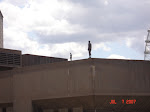
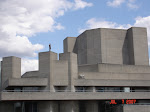
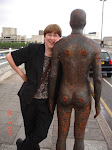
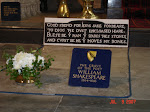
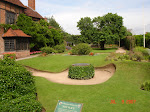
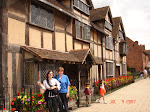

No comments:
Post a Comment